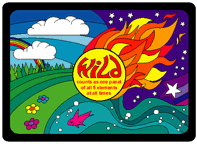...without solutions to distract you. |
back2 Orts |
back to the top of Alison |
back2 W/land |
|
| The Aquarius Challenge | Some Solutions (w/ Commentary) |
...without solutions to distract you. |
back2 Orts |
back to the top of Alison |
back2 W/land |
|
| The Aquarius Challenge | Some Solutions (w/ Commentary) |
 I feel that there's
great potential for mathematical exploration of this puzzle, but
I'm far from being a mathematician. I welcome anyone who is more
mathematically inclined to take a stab at some of these further
challenges or even the suggested proofs. Perhaps there's a even
a good lesson plan buried in here somewhere.
I feel that there's
great potential for mathematical exploration of this puzzle, but
I'm far from being a mathematician. I welcome anyone who is more
mathematically inclined to take a stab at some of these further
challenges or even the suggested proofs. Perhaps there's a even
a good lesson plan buried in here somewhere.
The "Reference" Layout
It's not hard to meet the requirements of the Challenge (a layout such that all five elements win with exactly seven panels with the play of a single wild card), without having any wasted panels at all. Elliot's first submission was 21 cards, no-waste (0 quads, 10 monos).
He says of his first effort, "[This one] is the 'reference' design. It's very methodical, and to beat it you have to start getting clever." It's not the smallest layout by any means, but it is elegant in its simplicity. The following was true of all five element groupings in his layout:
I think the last three points are dependent on the first point, so you'll probably find that all are true if the first is true. It was just striking because all five elements followed this pattern. They kind of radiated out from the central wild card.
Our theory: 21 is the smallest no-waste layout that can be achieved without using quads or crossing the wild card. Actually, I don't think you can use quads without wasting panels unless you cross the wild card, so we can probably shorten that to: 21 is the smallest no-waste layout that can be achieved without crossing the wild card.
Elliot points out, "The wild card has eight 'sites', which means up to three elements can occupy two sites. Maximum density layouts will be very mixed-up, so having the same element touching two adjacent sites is a waste." Crossing the wild card allowed him to get down to 19 cards, no-waste (0 quads, 6 monos).
On Quads and Monos:
 Quads (four-panel
cards) can be divided into convenient categories based on which
of the five elements they lack. The Aquarius deck does not contain
all of the possible quad permutations. This means that the perfect
quad for a given layout may not exist. Theoretical layouts using
these non-existent quads could be submitted to point out interesting
cases, of course.
Quads (four-panel
cards) can be divided into convenient categories based on which
of the five elements they lack. The Aquarius deck does not contain
all of the possible quad permutations. This means that the perfect
quad for a given layout may not exist. Theoretical layouts using
these non-existent quads could be submitted to point out interesting
cases, of course.
Elliot managed an 18-card, no-waste layout that still did not use quads.
His 17-card, no-waste layout contained only one quad.
The number of monos (full-panel cards) naturally decreases as the layouts become more and more compact.
These are just questions that came up as a result of the correspondence with Elliot. I wanted people to be able to benefit from it without seeing his solutions if they wanted to. Feel free to proceed to the solutions with commentary if you like. Actually it's perhaps an easier read than the discussion questions, which were designed to provoke further experimentation.
Anyhow, these are just some thought provoking questions, and further challenges. You don't have to answer these questions to submit a solution! I'm very interested in seeing other solutions to the Aquarius Challenge as it was originally stated. I'm sure there are many.
| --- Copyright © 2004 by Alison Frane --- |